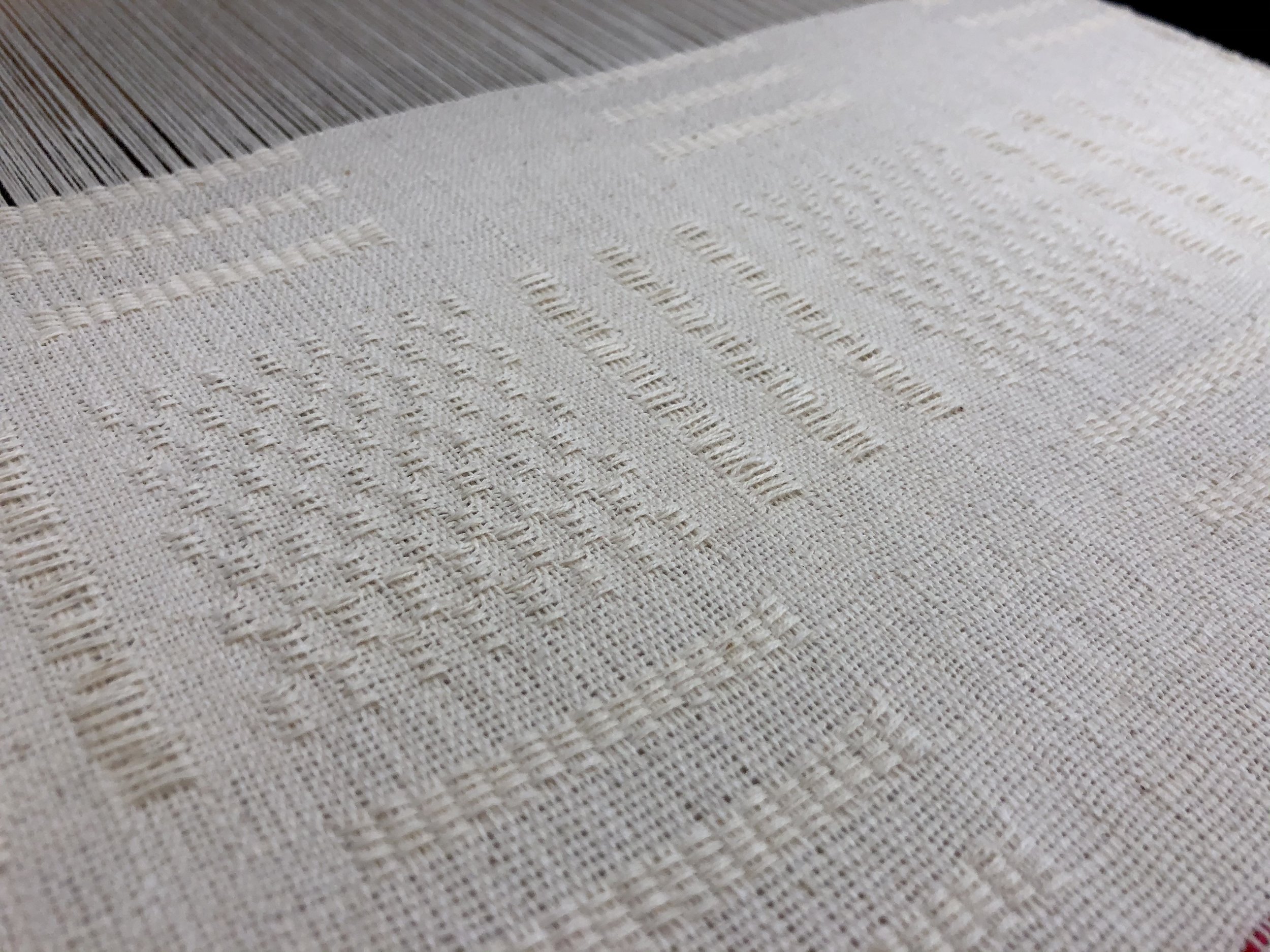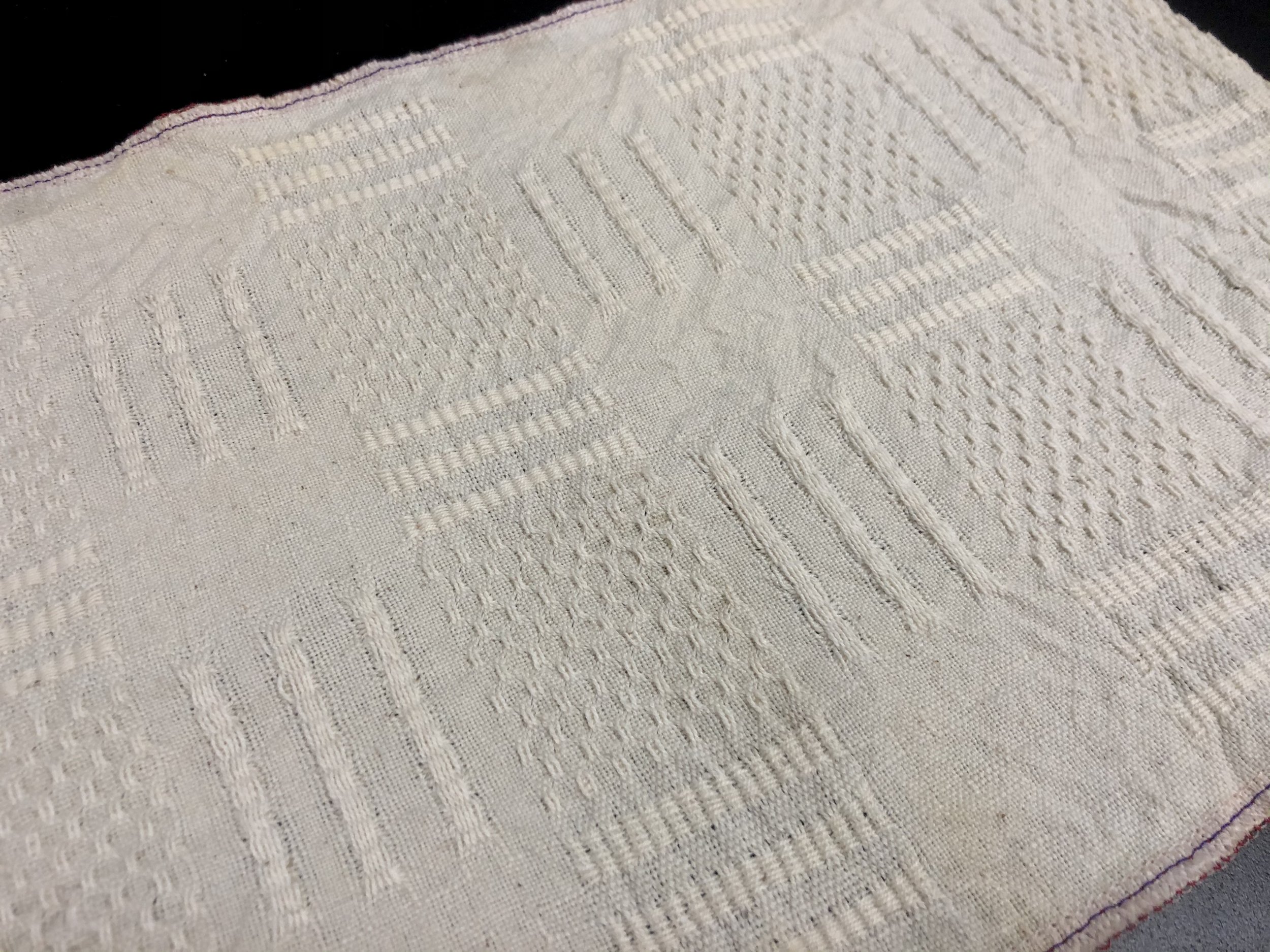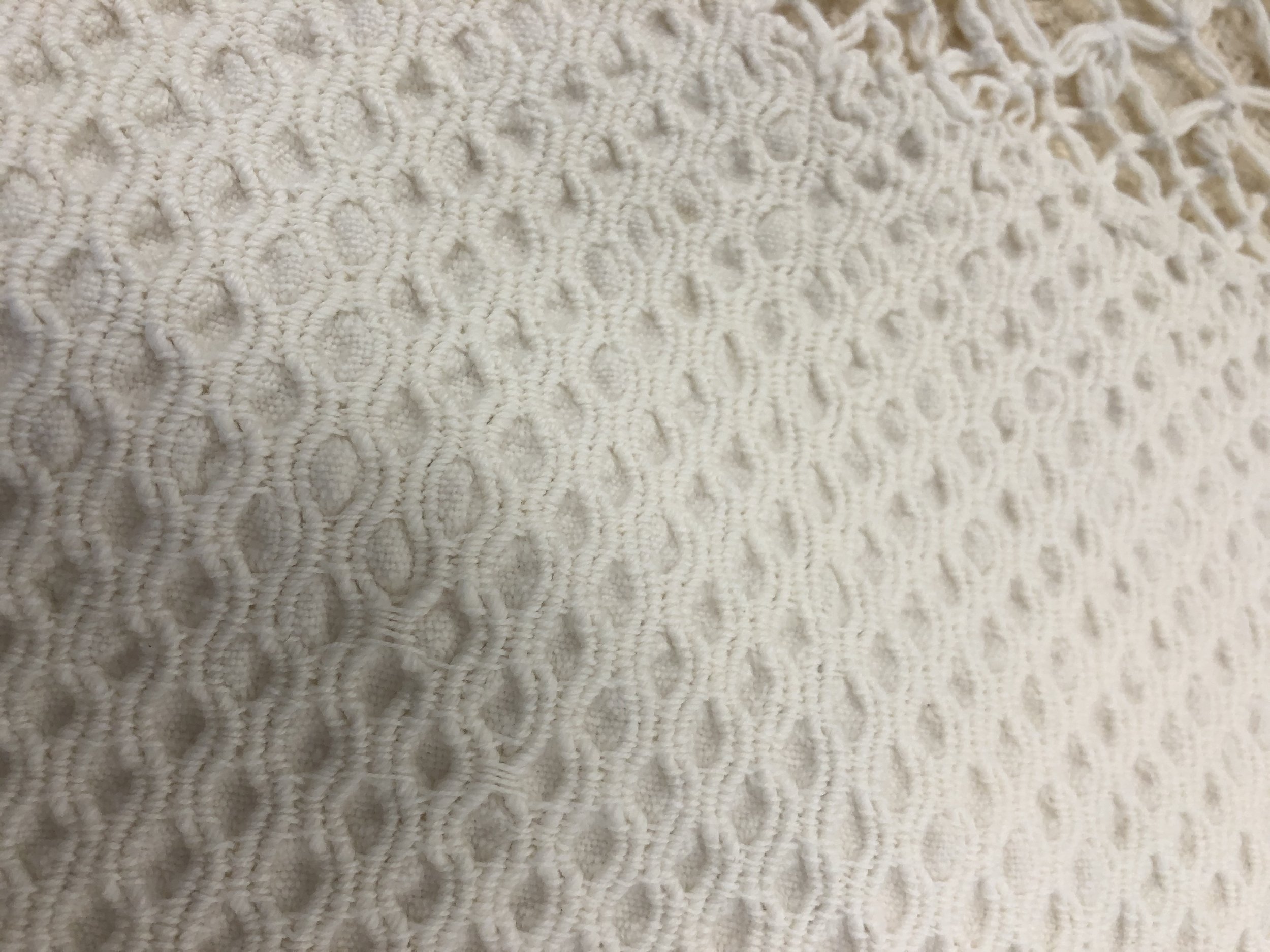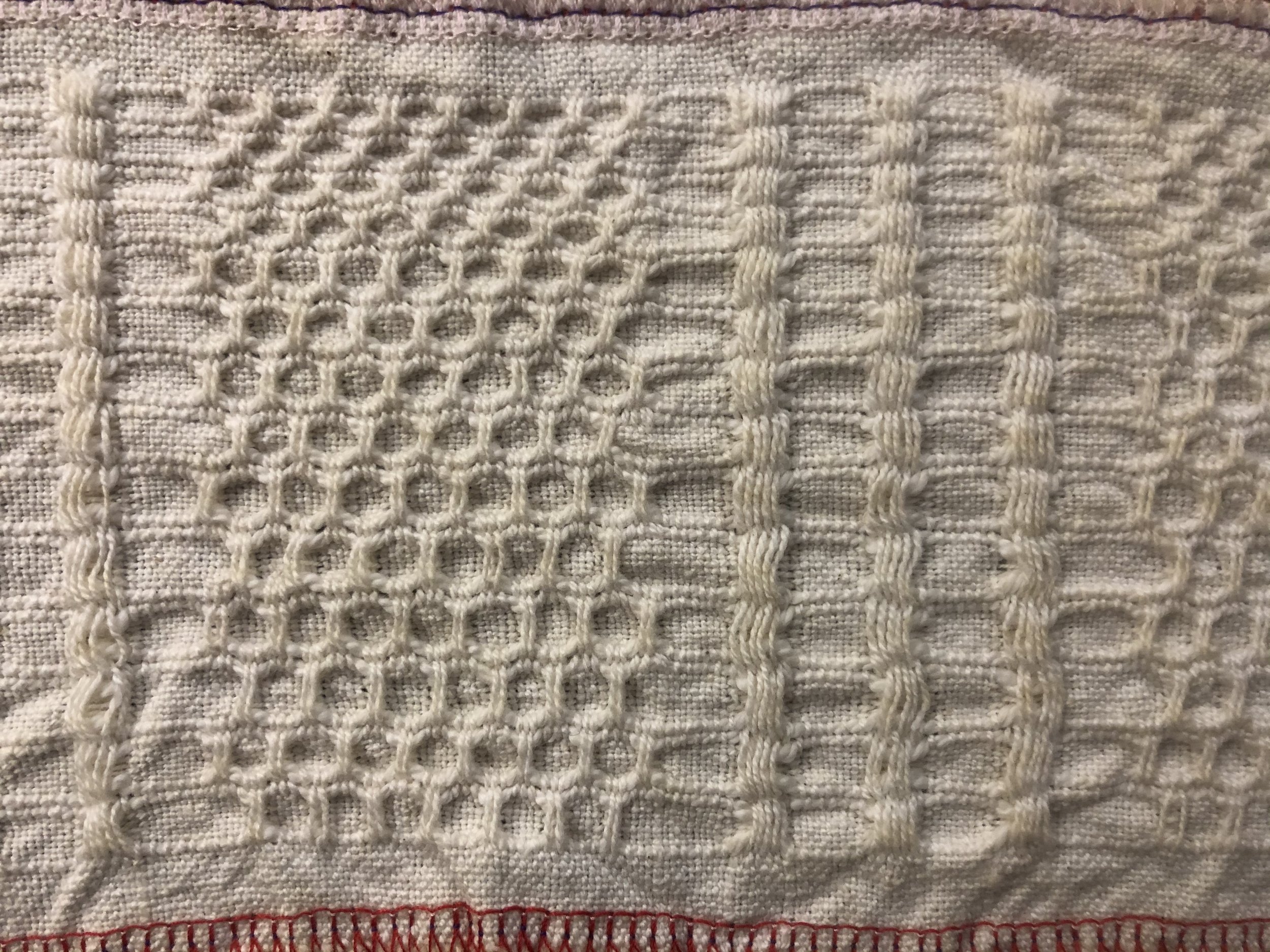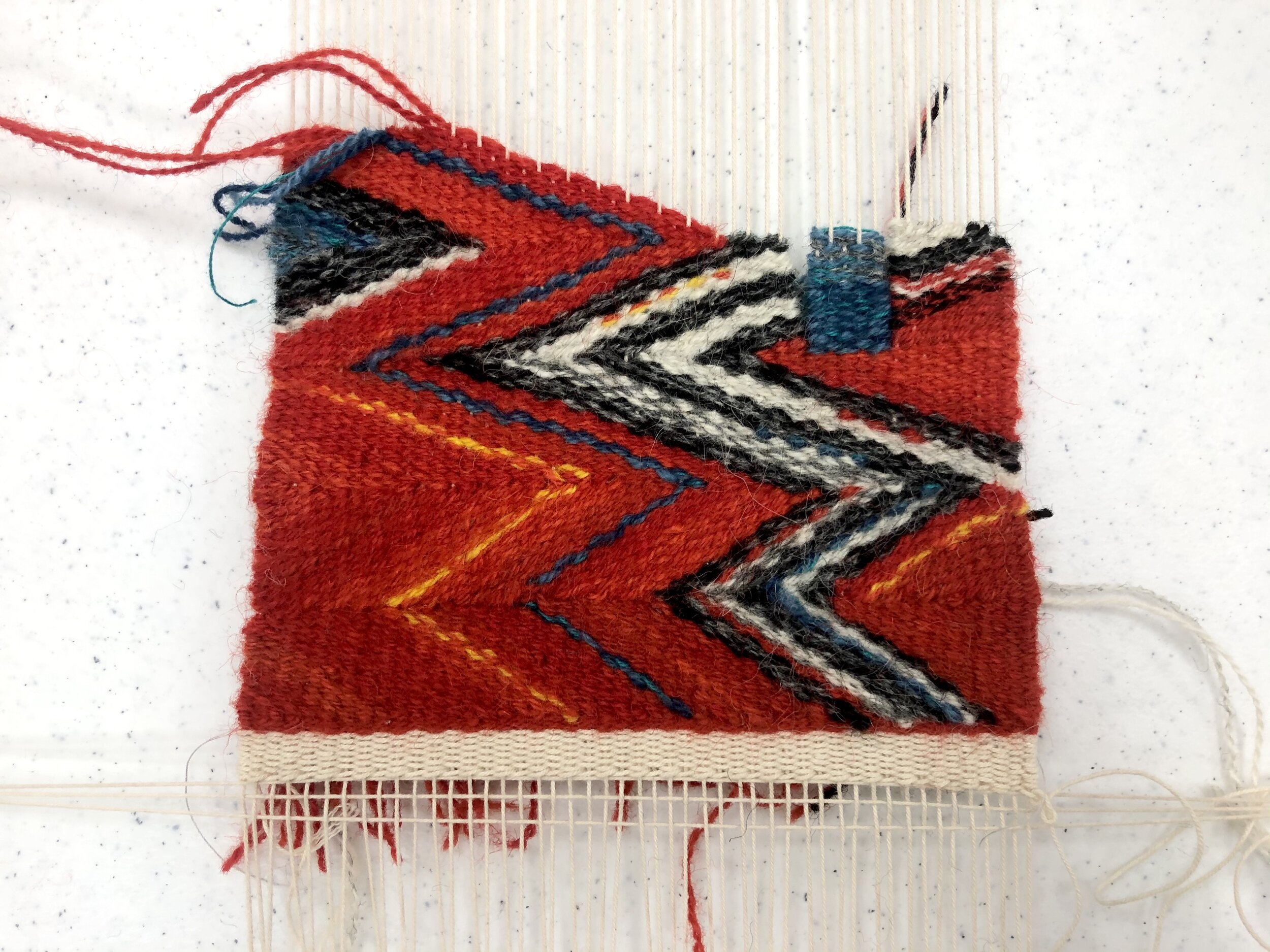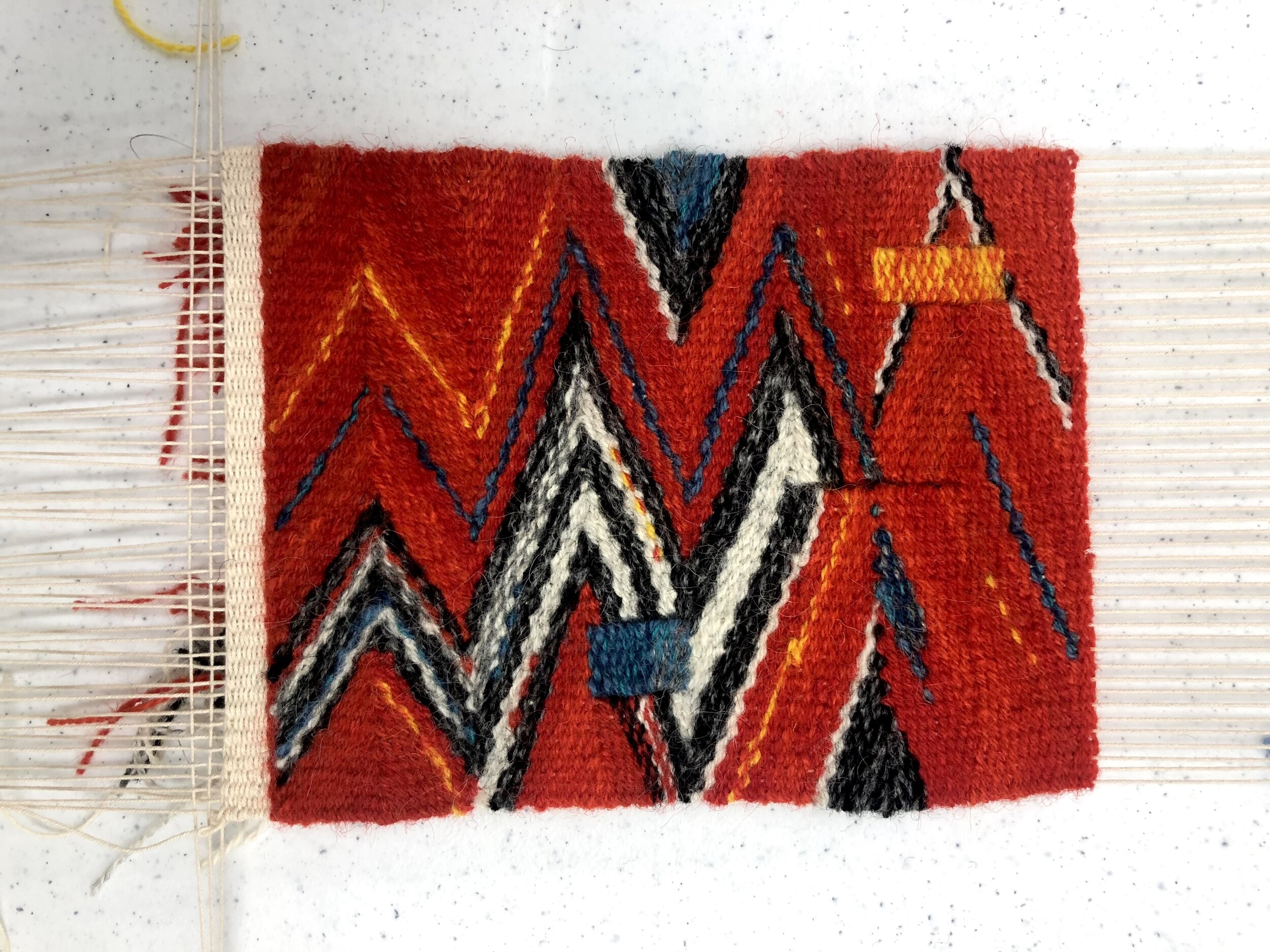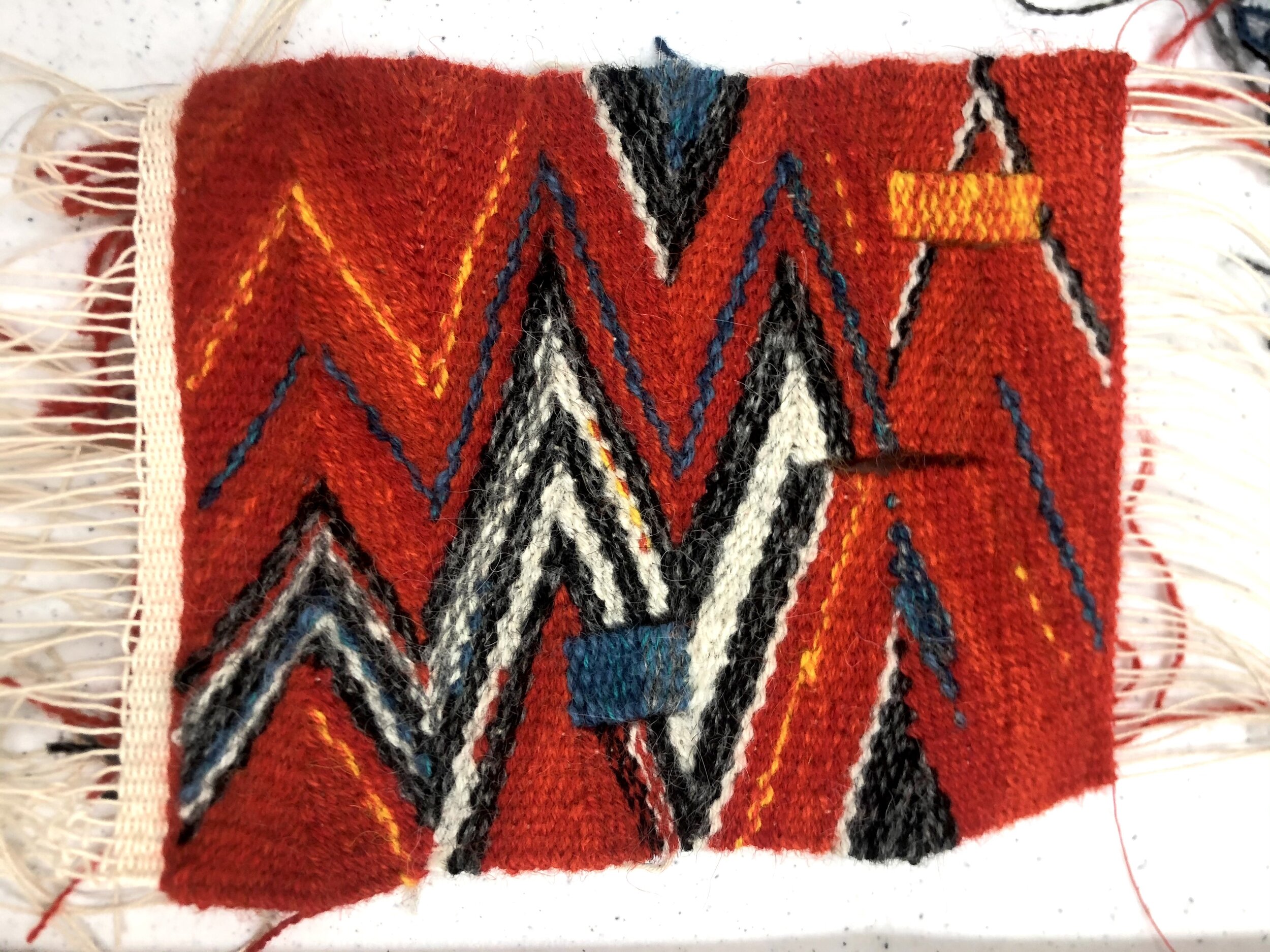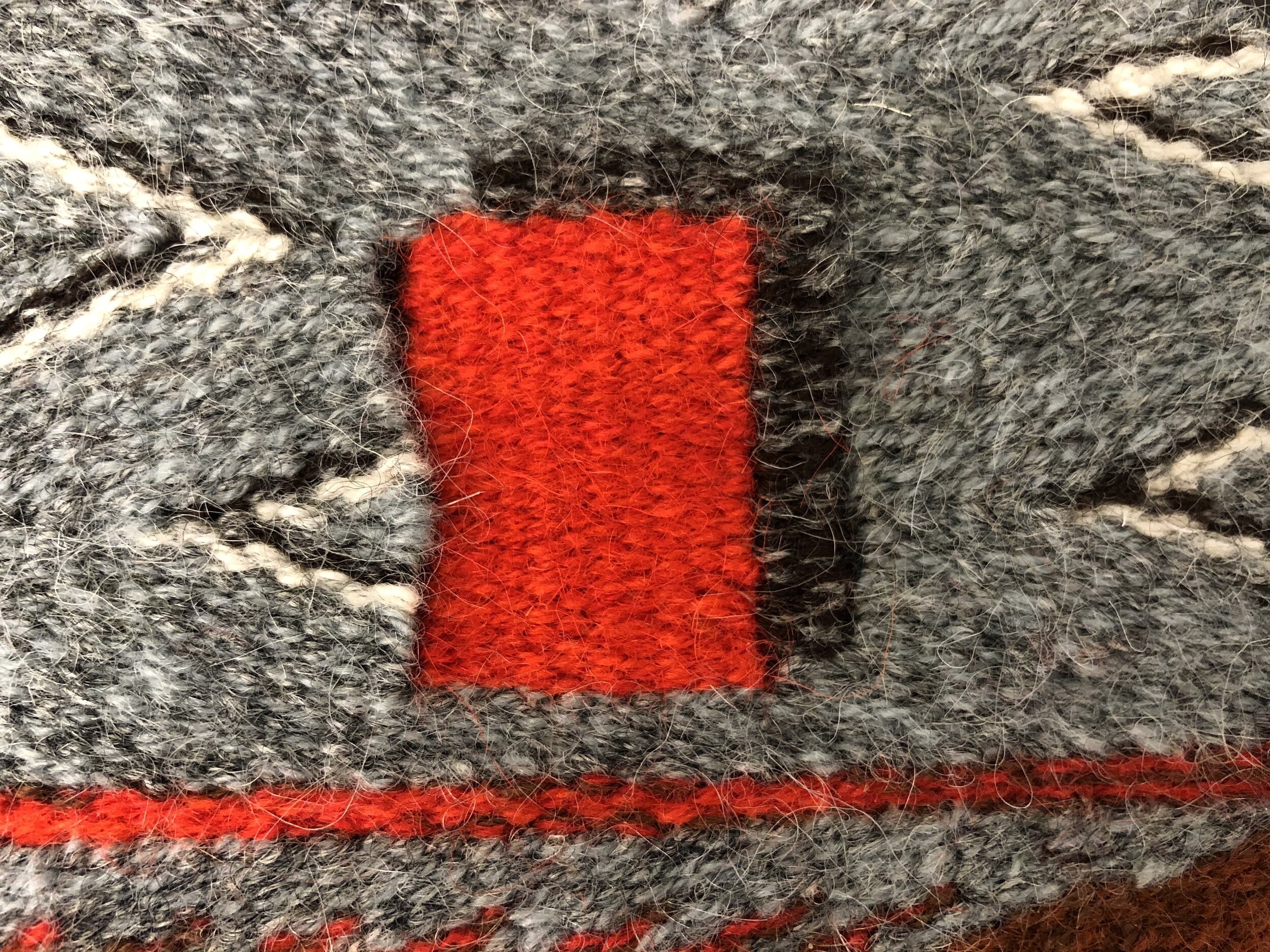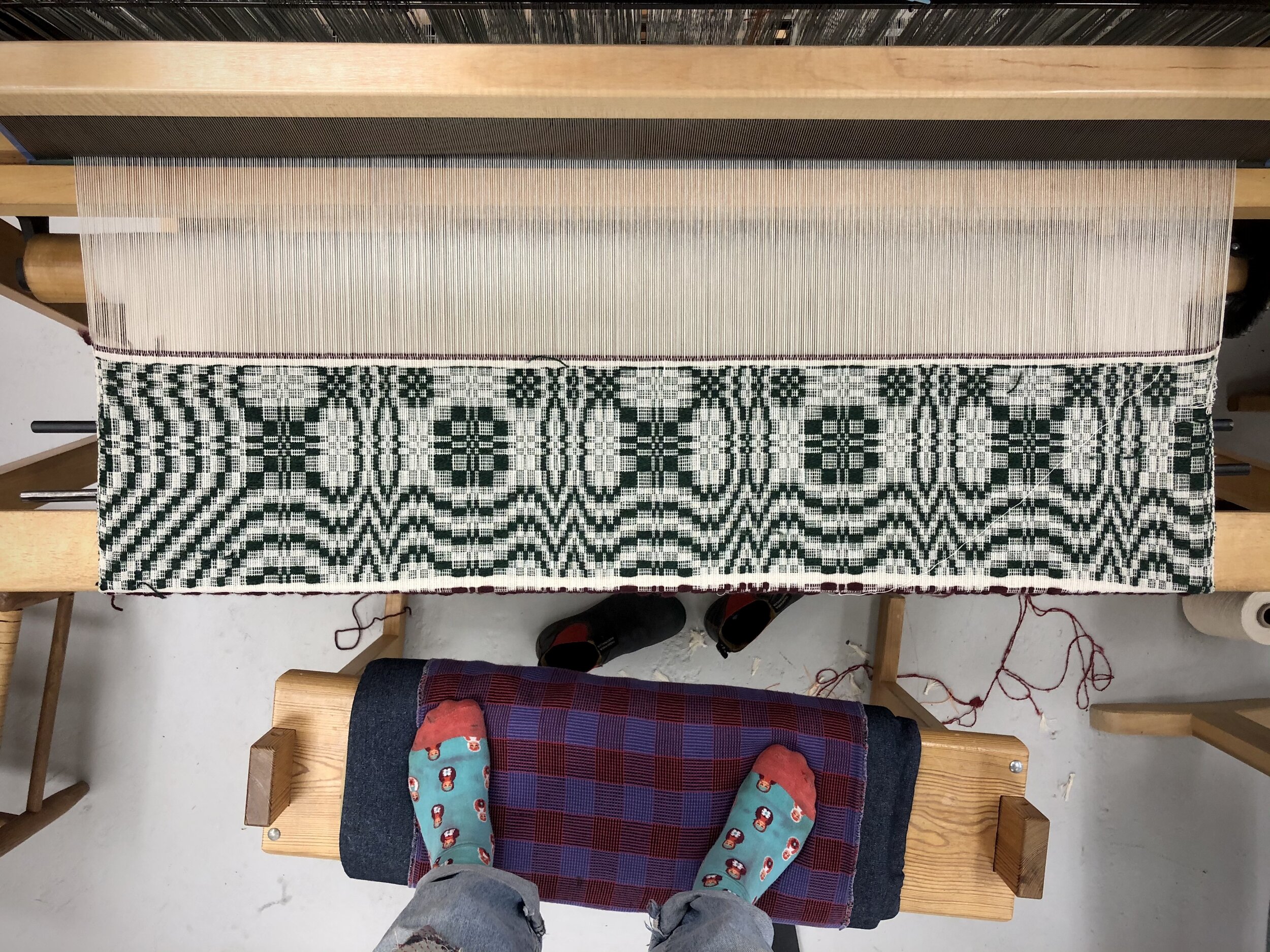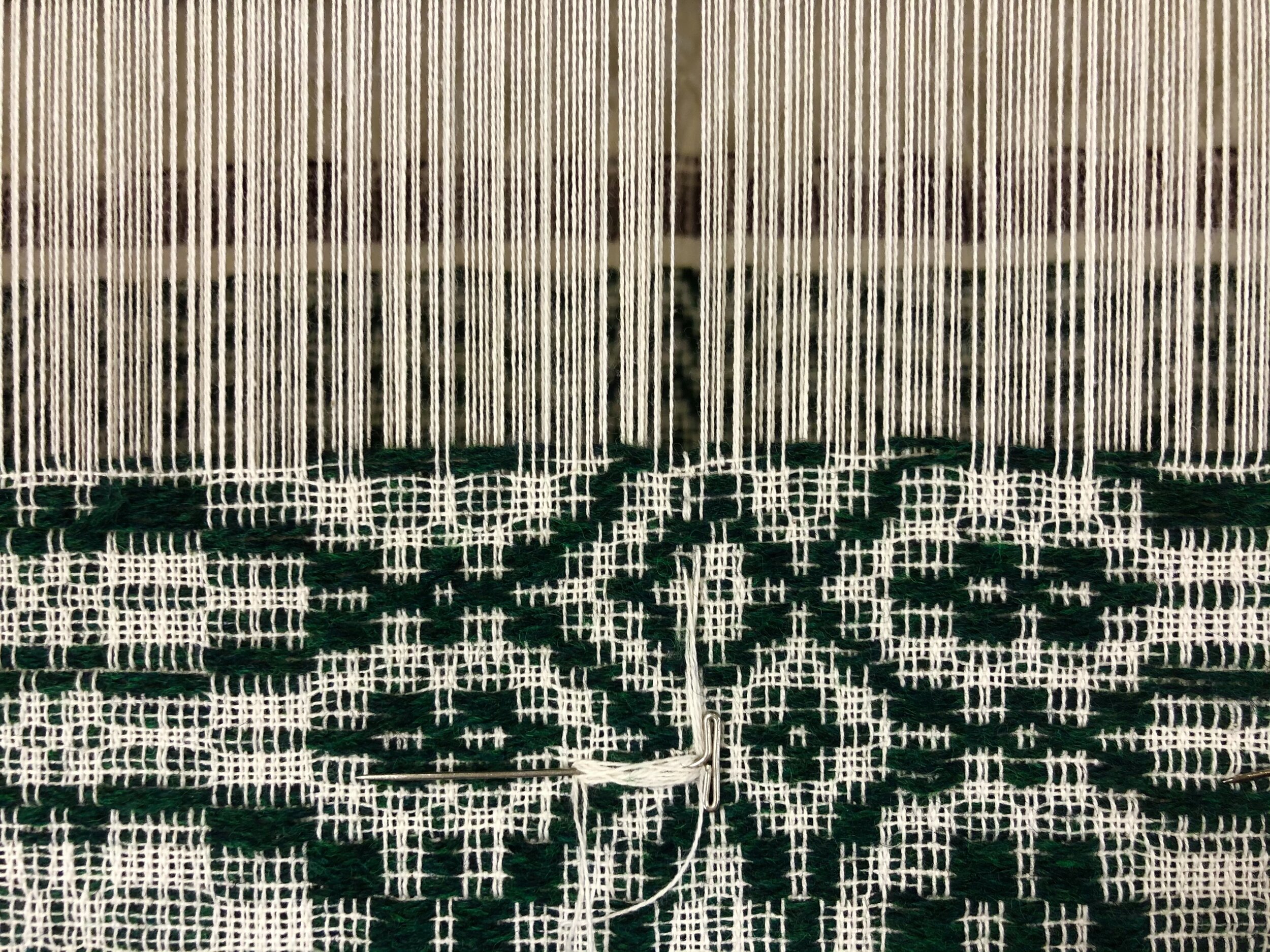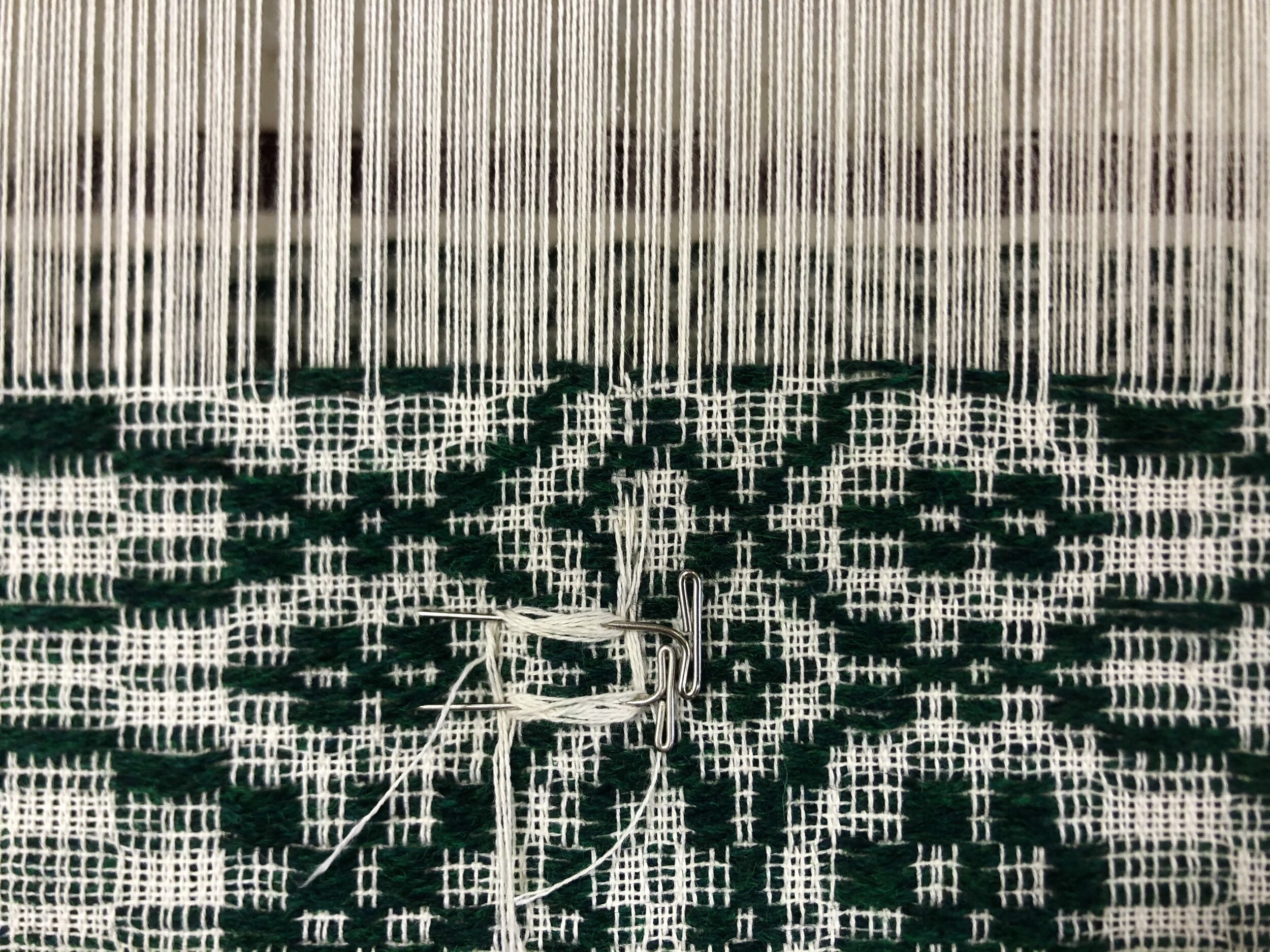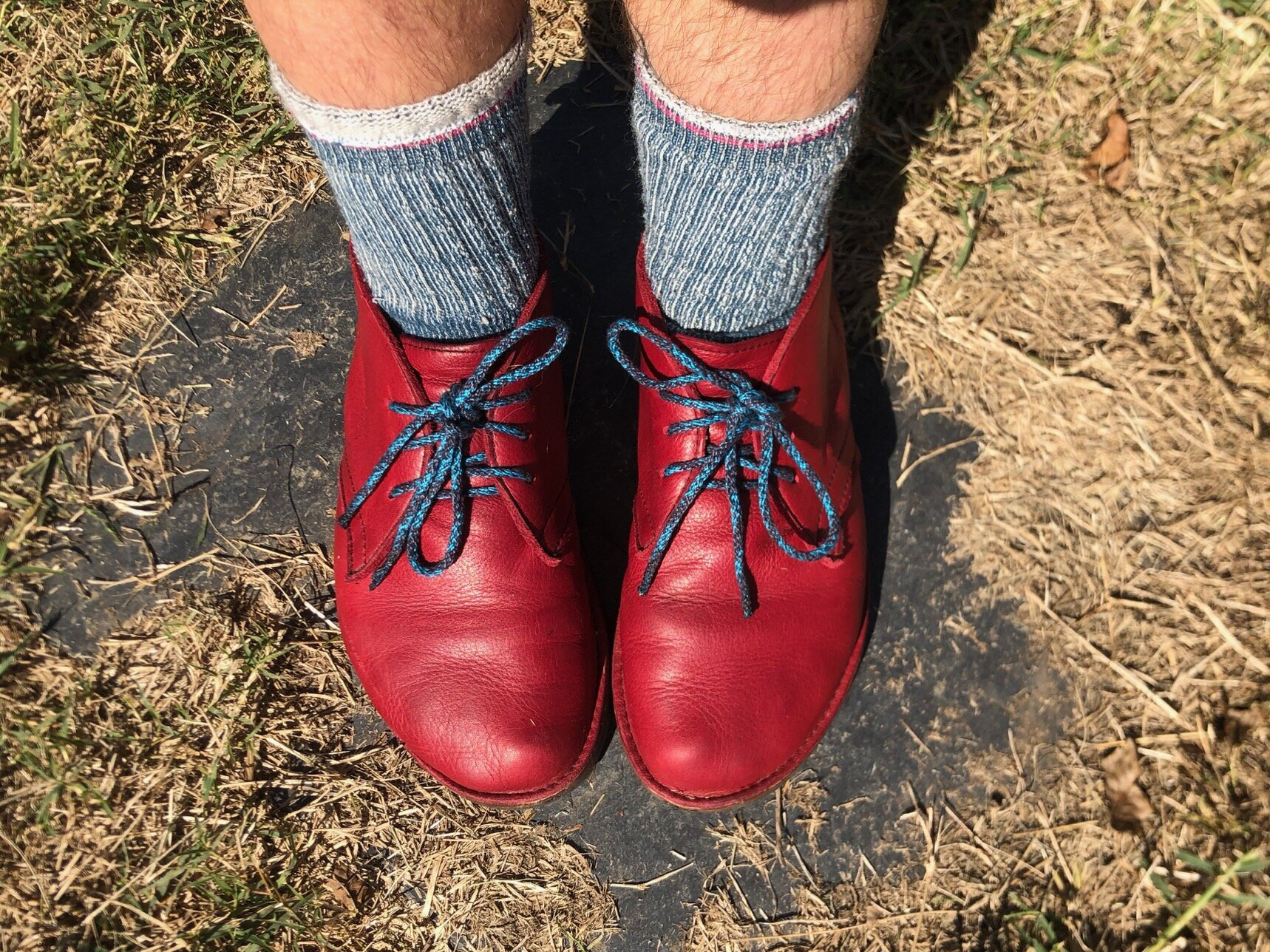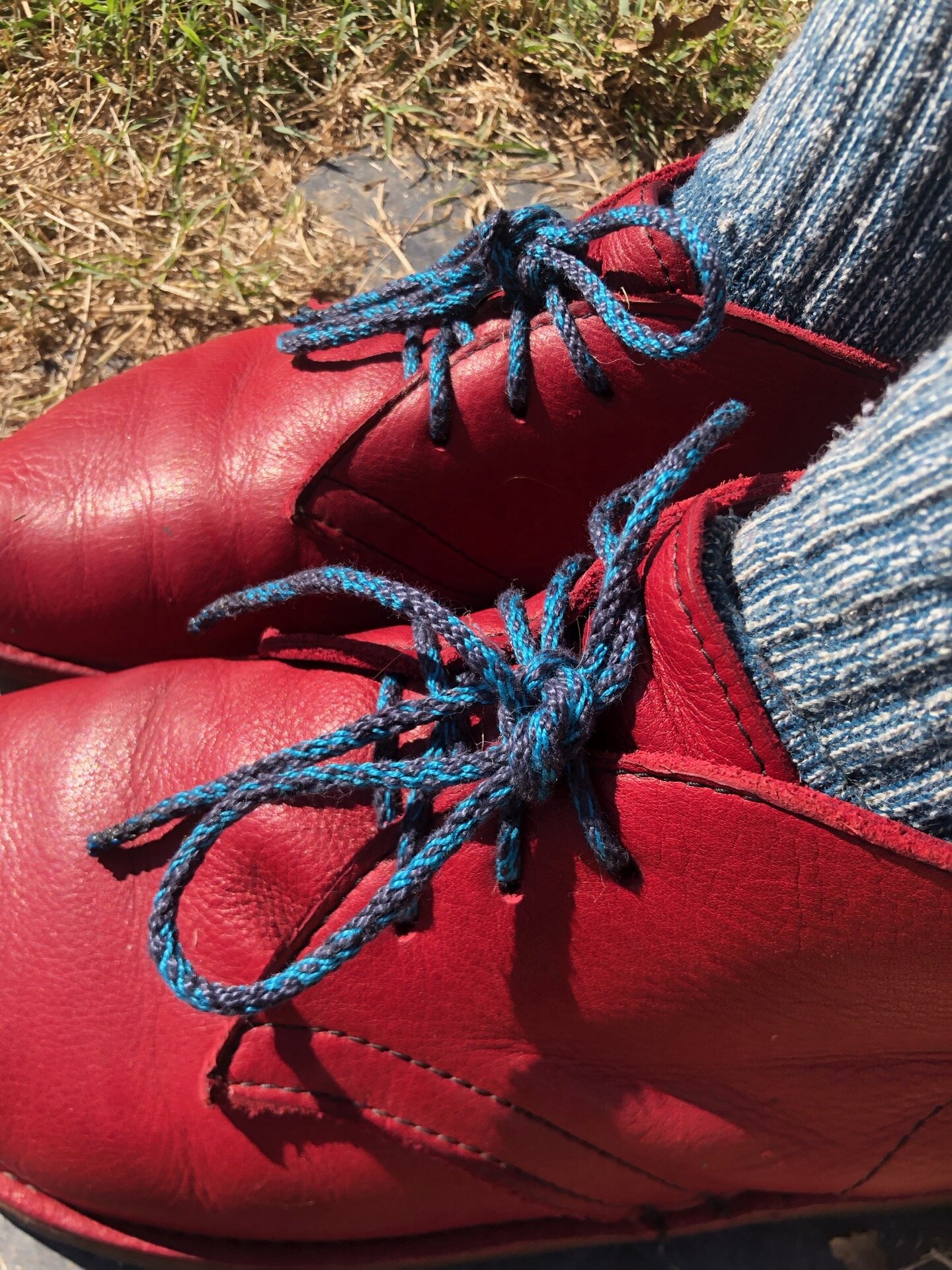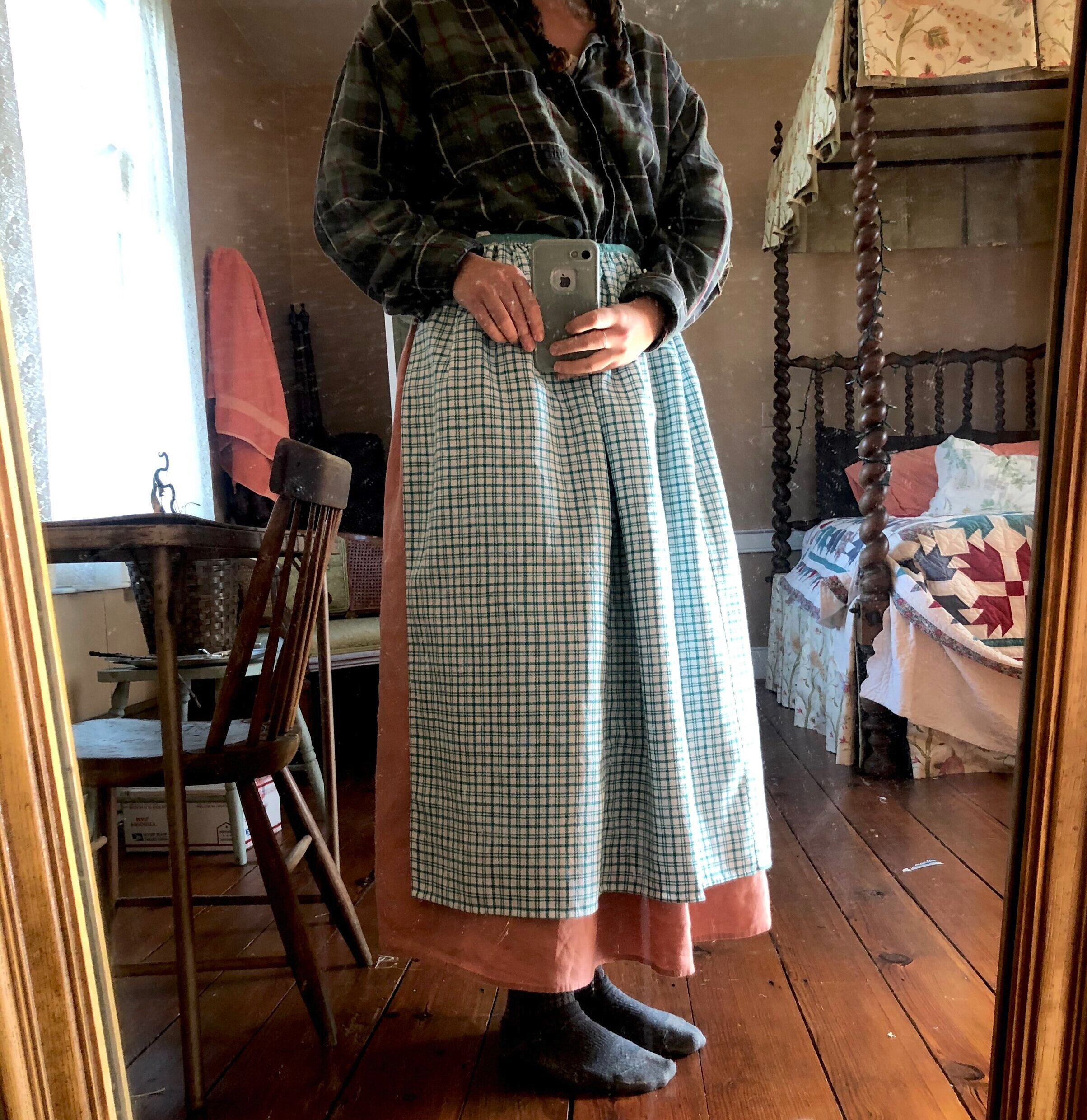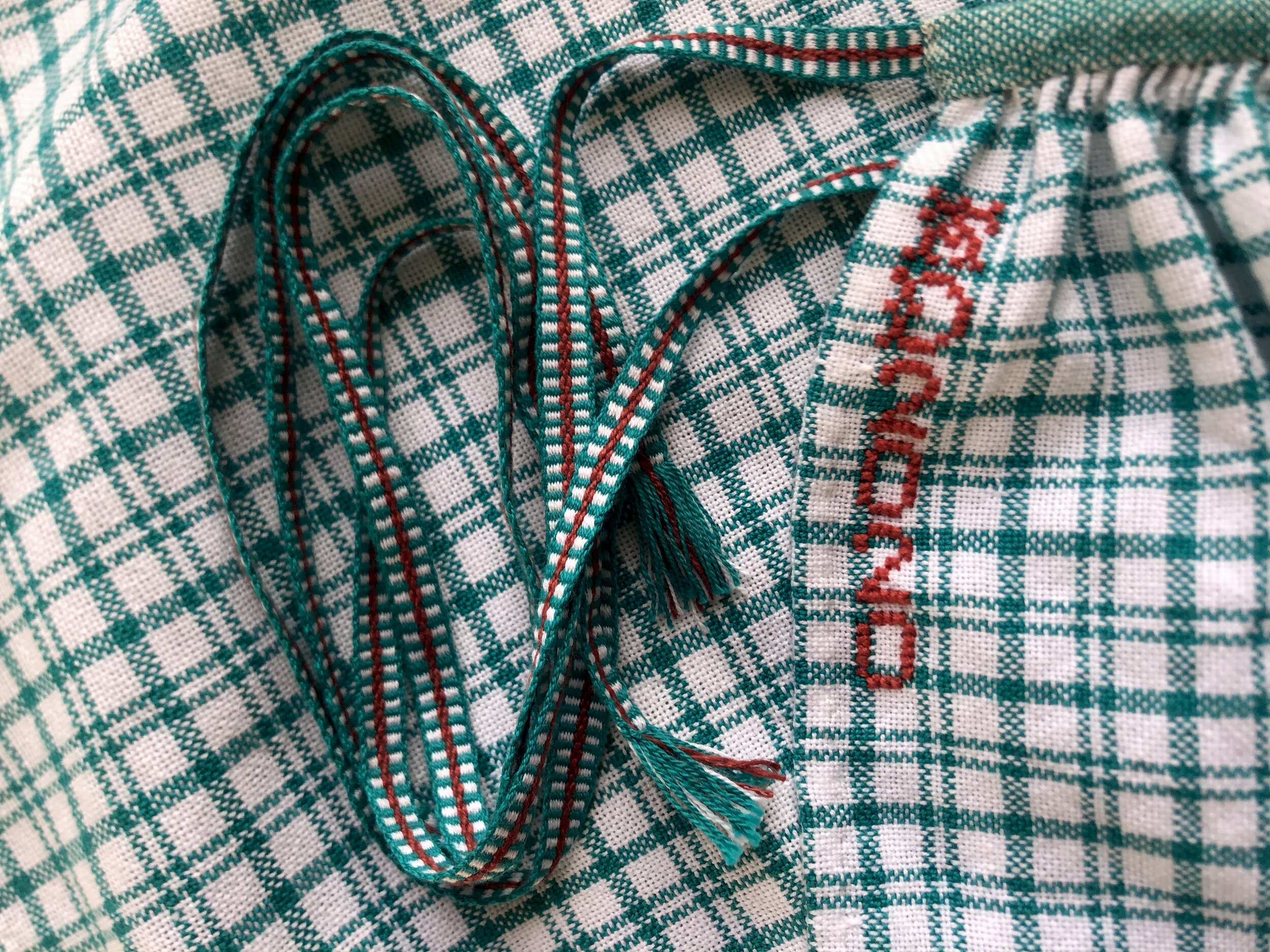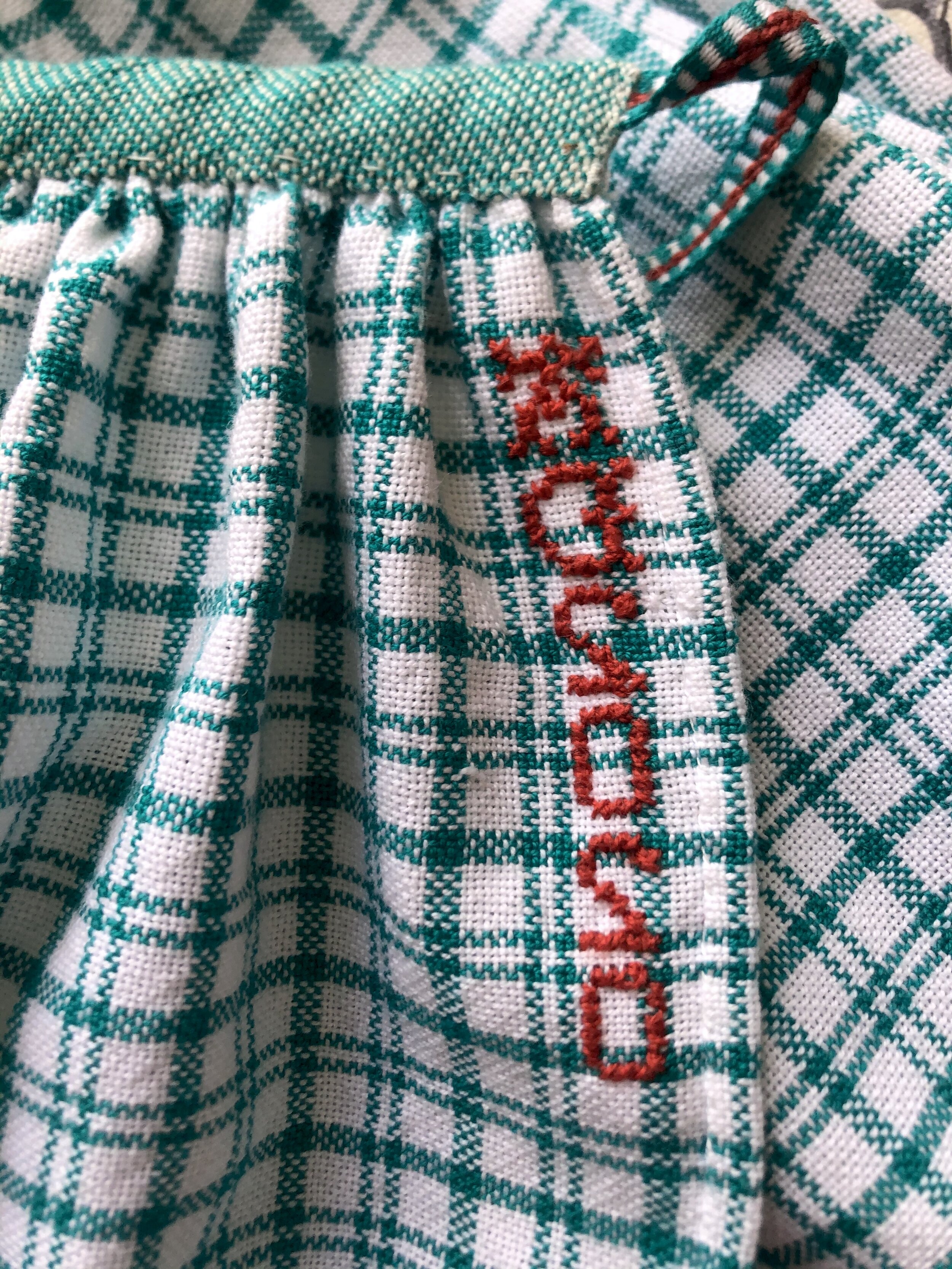I was lucky enough to assist Susan Leveille’s counterpane class at the Folk School at the end of September and it has sent me on a sampling journey, exploring the counterpane drafts of Sarah Nelson included in Francis L. Goodrich’s Coverlet and Counterpane Drafts by Barbara Miller and Deb Schillo. Before class, Susan asked us to wind a warp using UNmercerized cotton in white or natural, as fine as we could get it (I could only get my hands on 20/2 before class started), 15-18” wide. I wound my warp to be sett at 32 epi.
I chose to work from the No. 8 draft “Huckyback, Satin and Plain” for my class samples. I started sampling with various wefts of different thicknesses, and I found that using the same material as the warp (20/2 cotton) worked best with this configuration. Pictured below are those samples on the loom and after washing.
I worked up a few samples in honeycomb treadling as well, using the same tabby weft as above and a fluffier 5/3 cotton for the honeycomb cord. Sarah didn’t mention working it this way in her samples, but Susan brought an antique honeycomb counterpane to show us so I wanted to try it out while I had that to reference. Below left is Susan’s antique, my sample is on the right.
Just for fun I also tried it using blue cotton unmercerized weft—it really makes it easy to see the floats in the warp and weft and provides some interesting texture.
One small criticism I have of the layout of this book is that the computer drawdowns are sooooo tiny that it’s really hard to read them. This problem led me to trying something different, which was working from the drafts in the old notation as Sarah wrote them, as well as trying to follow her treadling patterns, which are written out in full sentences, instead of in a drawdown. This has proven really fun and has helped me be able to read the cloth itself better, instead of relying on the computer draft. It’s been so enlightening to weave these samples that I have started working through all of the Sarah Nelson drafts, this time using the 30/2 unmercerized cotton I wanted to use on the first batch. More to come on each of those samples!
Project details:
Draft: Sarah Nelson’s No. 8 Huckyback, Satin and Plain from Frances Goodrich’s Coverlets & Counterpanes
32 epi
16.5” wide in reed
Wound 4 yards of warp
Warp and weft: 20/2 unmercerized cotton, honeycomb cord: 5/3 unmercerized cotton
